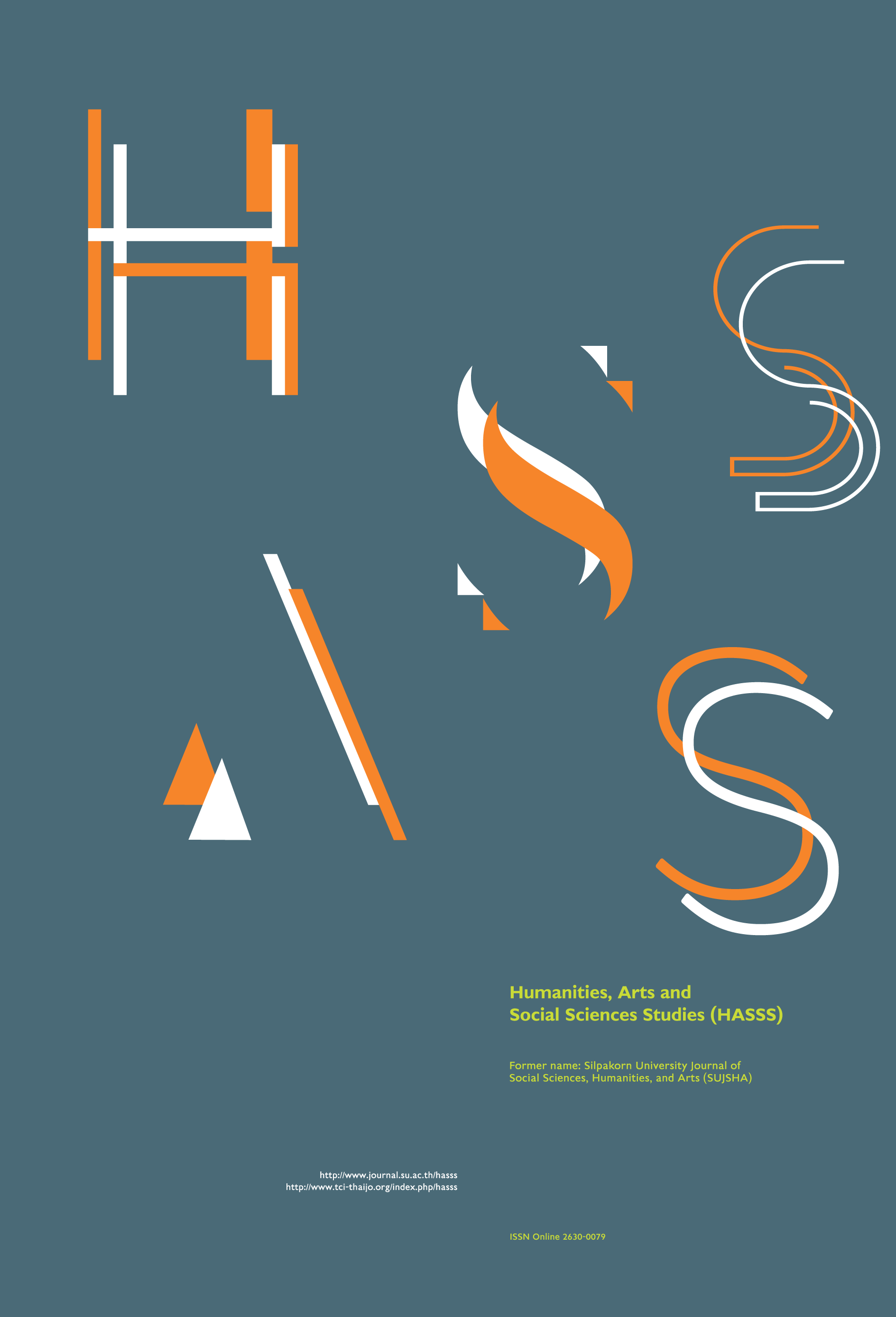The development of product design from natural materials
Main Article Content
Abstract
This research aims to develop community products from natural materials for Sukasem Occupation Group, Bang Len Subdistrict, Bang Len District, Nakhon Pathom Province by evaluating opinions toward community product form and survey purchasing behavior and factors affecting the purchasing of designed and developed community products. Research tools include 1. Semi-structured interview form, 2. Evaluation form of product characteristics and, 3. Satisfaction questionnaire. Data Analysis using statistics are as follows: Percentage, Mean and Standard Deviation. The results showed that the group needs to develop these products, women’s handbag, shoes, hat, bookmark, and spa packaging. The expert evaluation results found that the utility of the product was at a high level ( =3.78; S.D. = 0.41), followed by the beauty at a high level ( = 3.75; S.D. = 0.44). Suitable materials at a high level were shoes, hat, and spa packaging ( = 3.74; S.D. = 0.44). The survey of purchasing behavior and factors affecting the purchasing of designed and developed community products found that most sample groups had the highest demand for shoes (40%) followed by women's handbag (20%), hat (18%), spa packaging (15%) and bookmark (7%). The factors that resulted in purchasing of the designed and developed community products were the products with unique designs from the general products in the market. The unique design products were ranked at the highest level ( = 4.78; S.D. = 0.42). Followed by a variety of applications, it was classified at the highest level ( = 4.61; S.D. = 0.49); a selection of suitable materials for use was at the highest level ( = 4.60; S.D. = 0.49); beautiful patterns that match the needs of consumers were ranked at the highest level ( = 4.59; S.D. = 0.49). Finally, the products that still showed the uniqueness of the handicrafts were ranked at the highest level ( = 4.56; S.D. = 0.50).
Downloads
Article Details
All rights reserved. Apart from citations for the purposes of research, private study, or criticism and review,no part of this publication may be reproduced, stored or transmitted in any other form without prior written permission by the publisher.
References
Leesuwan, V. (1992). Handicrafts. Bangkok: Bannangsue Publisher. [in Thai]
Na-Chumphae, S. D. (2007). Effect of Technology on Design. Bangkok: Odeon Store Publisher. [in Thai]
Pattaranon, J. (2010). The Development of Local Basketry Handicraft Products by Using Participatory Action Research Methodology: A Case Study of The Group Baikapo, Thung Pho Subdistrict Chulabhorn District, Nakhon Si Thammarat Province. Master of Education Thesis: Art Education Graduate school Srinakharinwirot University. [in Thai]
Prachatai. (2006). OTOP, Who Will Benefit, Tracking Thaksinomics Impacts Grass-Roots. [Online URL: https://prachatai.com/journal/2006/02/22272] accessed on November 25, 2018. [in Thai]
Srisan, S. (2006). Design and Development of Products from Papyrus in the Northeastern Region. Ubon Ratchathani: Faculty of Applied Arts and Design, Ubon Ratchathani University. [in Thai]
Sudsang, N. (2005). Industrial Product Design Research. Bangkok: Odeon Store Publisher. [in Thai]
Charoenwichianchay, W. C. (2006). Pattern Design, Home Decor Products, Fabric Category of OTOP Products, Pathum Thani Province. Pathum Thani: Faculty of Fine Arts, Rajamangala University of Technology. [in Thai]
Withatanang, W. (2015). Development on standards of basketry product for export. VRU Research and Development Journal Science and Technology 10(2): 67-83. [in Thai]


